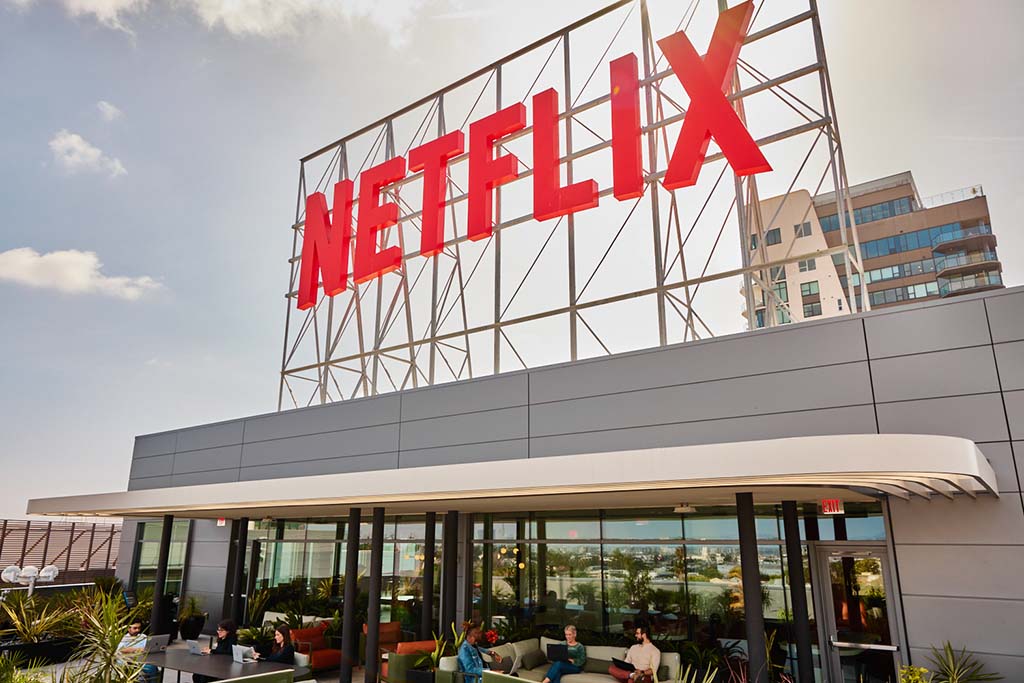Netflix Ad Business Still in the Crawling Phase, CFO Says
Streamer’s stock price is down 5%

Netflix chief financial officer Spencer Neumann said the streaming leader is still crawling when it comes to selling advertising.
The cautious short-term outlook for advertising contributed to Netflix stock dropping 5% to close at $412.24 a share Wednesday.

Netflix launched its $6.99-a-month ad-supported tier in November.
“We’re still in the crawl of the crawl, walk, run stage. So it is not easy to build and add business from scratch. We’ve got a lot of work to do,” Neumann said at the Bank of America Securities Media, Communications and Entertainment Conference.
“We have to scale the reach of our ads tier. So we need — advertisers want a scaled solution. So that is the No. 1 priority. And then No. 2 is to better monetize that reach,“ Neumann said. “As you’ve seen in our guidance, what we’ve done so far is not material to the overall revenue of the business. It’s something we’re building into and we have to get better across the board.”
Netflix has not said how much ad revenue it generates.
At a time when other programmers are creating new commercial formats and changing the ways advertising is sold, Netflix’s ad product is “really still kind of really infancy in terms of innovation,” he said.
Broadcasting & Cable Newsletter
The smarter way to stay on top of broadcasting and cable industry. Sign up below
But Neumann insisted that eventually, the ad business will be significant for Netflix.
“I think I’m super bullish and confident in the long-term opportunity of advertising as a big incremental revenue and profit contributor to the business, but we do have to build it over time,” he said.
Neumann reiterated that the company was pleased with what was essentially its first upfront.
“We met our expectations,“ he said. “So we closed deals with the major holding companies with a bunch of independent agencies. We closed the deals at the top — sort of the top CPM of the kind of streaming market. So we kind of preserved and reinforced the premium environment of our ads environment.”
He added that both Netflix’s new ad business and its push to curtail password-sharing would generate high profit-margin revenue.
“They're not 100% margin businesses. But yes, we believe they're high incremental margin,” Neumann said.
“Paid sharing is a little bit more like pricing and member growth in terms of less — fewer direct costs associated with it,“ he said. “Obviously, there’s people costs and things behind the scenes. Advertising has some more direct costs in terms of building out a sales force. There’s revenue share. There's a stack to build out. There’s capabilities there. But we wouldn't be getting into these if we didn't think they were big, both revenue and profit contributors to the business.”
Netflix has said that it was pleased with the rate at which new subscribers were choosing its ad supported product.
But of those signing up because of the limits on password-sharing, fewer are picking an ad-supported product.
“The ad tier is a healthy mix in general across our plans, but it’s the minority because we have multiple plans,” Neumann said. “It skews a little bit more towards ad-free in these spinoffs [people who previously used shared passwords to access Netflix]. So still a healthy kind of proportion going into the ad tier but a little bit higher mix into the ad-free relative to organic signup, which makes sense because a lot of these folks have been enjoying Netflix for a long time ad-free. So it’s slightly skewed in that direction.”
Jon has been business editor of Broadcasting+Cable since 2010. He focuses on revenue-generating activities, including advertising and distribution, as well as executive intrigue and merger and acquisition activity. Just about any story is fair game, if a dollar sign can make its way into the article. Before B+C, Jon covered the industry for TVWeek, Cable World, Electronic Media, Advertising Age and The New York Post. A native New Yorker, Jon is hiding in plain sight in the suburbs of Chicago.

